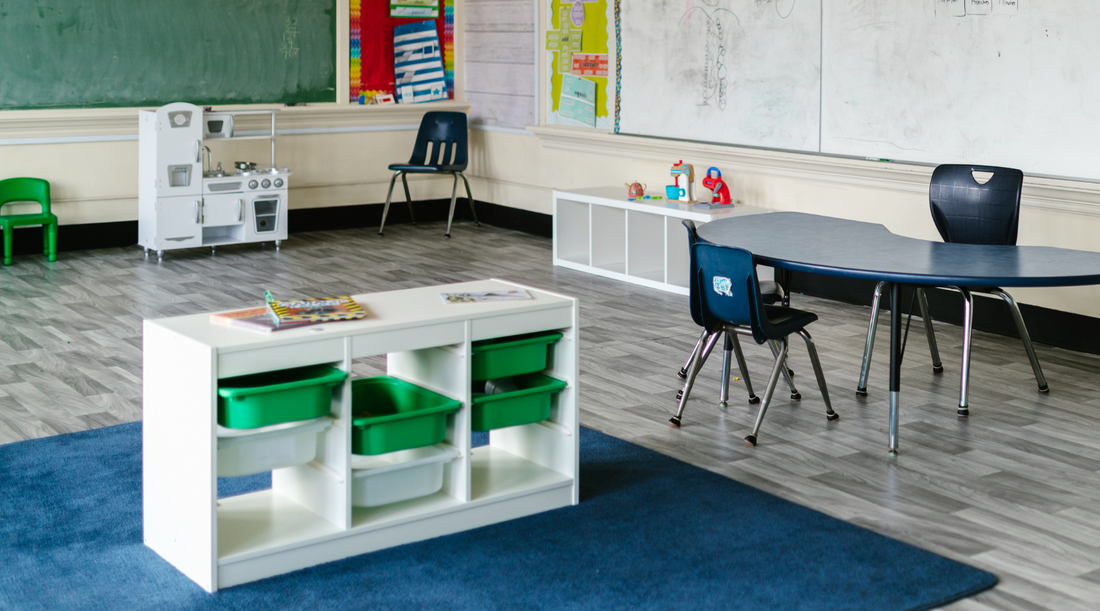
IEP vs. 504 Plan - What are They and How are They Different?
Share
Understanding the Difference Between an IEP and a 504 Plan
Navigating the educational landscape for a child with special needs can be complex and overwhelming for parents and caregivers. Two crucial tools in this process are the Individualized Education Program (IEP) and the 504 Plan. Both are designed to support students with disabilities, but they serve different purposes and are governed by different laws. Understanding the distinctions between an IEP and a 504 Plan can help ensure that your child receives the appropriate accommodations and services they need to succeed in school.
What is an IEP?
An Individualized Education Program (IEP) is a plan developed for public school children who need special education. The IEP is tailored to the individual student’s unique needs and is designed to provide them with a free appropriate public education (FAPE) under the Individuals with Disabilities Education Act (IDEA).
Key Features of an IEP:
Eligibility: To qualify for an IEP, a child must be evaluated and identified as having one or more of the 13 disabilities listed in IDEA. These disabilities can include autism, hearing impairment, intellectual disabilities, and specific learning disabilities, among others.
Comprehensive Evaluation: The process begins with a comprehensive evaluation conducted by a team of professionals. This evaluation assesses various aspects of the child's abilities and needs.
Written Plan: An IEP is a written document that outlines the child’s specific learning goals and the services the school will provide to help achieve those goals. This can include specialized instruction, speech therapy, occupational therapy, and more.
Measurable Goals: The IEP includes measurable annual goals tailored to the student’s needs. Progress toward these goals is regularly monitored and reported to parents.
Team Collaboration: The IEP is developed by a team that includes the child’s parents, teachers, school administrators, and other relevant professionals. Parents play a crucial role in the development and implementation of the IEP.
Review and Update: The IEP is reviewed and updated at least once a year to ensure it continues to meet the child’s needs. If necessary, adjustments are made based on the child’s progress and any new evaluations.
What is a 504 Plan?
A 504 Plan is designed to provide accommodations and modifications to ensure that students with disabilities have access to the same educational opportunities as their peers. The 504 Plan is governed by Section 504 of the Rehabilitation Act of 1973, a civil rights law that prohibits discrimination based on disability.
Key Features of a 504 Plan:
Eligibility: To qualify for a 504 Plan, a child must have a disability that substantially limits one or more major life activities, such as learning, reading, communicating, or walking. The definition of disability under Section 504 is broader than under IDEA, so more students may qualify for a 504 Plan.
Evaluation: While a formal evaluation is typically conducted, it is generally less comprehensive than the evaluation required for an IEP. The evaluation can include a review of the child’s medical history, academic records, and observations.
Accommodations: A 504 Plan provides accommodations that help the child access the general education curriculum. These accommodations might include extended time on tests, preferential seating, modified assignments, and assistive technology.
Written Plan: A 504 Plan is also a written document, but it is typically less detailed than an IEP. It outlines the specific accommodations and supports the child will receive.
Flexibility: Unlike the IEP, a 504 Plan does not require a team of specialists to develop. It is often created by a school’s 504 coordinator, teachers, and parents.
Review and Update: The 504 Plan is reviewed periodically, usually annually, to ensure that the accommodations continue to meet the student’s needs.
Key Differences Between an IEP and a 504 Plan
Legal Basis
- IEP: Governed by IDEA, which focuses specifically on special education services.
- 504 Plan: Governed by Section 504 of the Rehabilitation Act, a civil rights law.
Eligibility
- IEP: Requires meeting one or more of the 13 disability categories listed under IDEA and the need for special education services.
- 504 Plan: Requires a broader range of disabilities that substantially limit one or more major life activities.
Development Process
- IEP: Must be created by the following: parent or caregiver, a general education teacher, a special education teacher, a school psychologist/specialist, and a district representative
- 504 Plan: Developed by teachers, parents, and school principal or 504 coordinator
Scope
- IEP: More detailed and specific, focusing on measurable educational goals, receives federal funding.
- 504 Plan: More flexible, focusing on removing barriers to learning and providing accommodations.
Video Explanation IEP vs. 504 plan from Understood
Free Webinar
If you are feeling confused about the IEP/504 plan process or feel like you want to learn more about advocating for your child in school check out this FREE 6 part webinar parent/caregiver coaching series. Good news is that it is open for ANYONE to attend. Check out the pictures below for more information on the course including registration details.


Conclusion
Both an IEP and a 504 Plan play vital roles in supporting students with disabilities, but they are designed to meet different needs. Understanding the distinctions between them can help parents advocate effectively for their child’s education. If you believe your child may benefit from either an IEP or a 504 Plan, start by discussing your concerns with your child’s teacher or school counselor. With the right plan in place, your child can thrive academically and socially in their school environment.
References
1. U.S. Department of Education. https://sites.ed.gov/idea/about-idea/
2. U.S. Department of Education. https://www2.ed.gov/about/offices/list/ocr/504faq.html
3. National Center for Learning Disabilities.https://ncld.org/ieps-vs-504-plans/
4. Understood. https://www.understood.org/en/articles/the-difference-between-ieps-and-504-plans
5. American Academy of Pediatrics. https://publications.aap.org/pediatrics/article/136/6/e1650/33895/The-Individuals-With-Disabilities-Education-Act?autologincheck=redirected
6. Educational Achievement Partnership Program by Children’s Wisconsin. www.EAPProgram.org